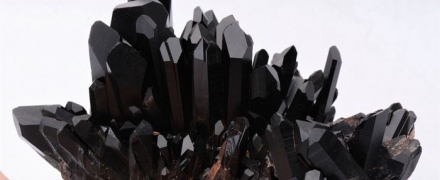open 10 am - 7 pm
laboratory is closed
Morion

Among faceted black jewelry inserts, morion is often found - a crystalline variety of quartz that has a black color. For cutting, almost opaque stones are used (translucent in thin chips) or completely opaque stones. As a rule, morions found in nature are somewhat transparent, and opaque varieties are often obtained by exposing colorless quartz (most often rock crystal) to high-energy radioactive radiation. As a result, the stone becomes pitch black and is perfect for making black faceted jewelry inserts. Collection samples of quartz are also exposed to radiation in order to give expression to the sample, enhancing the contrast of quartz and feldspar druses.
В геммологической практике бывают весьма увлекательные случаи с диагностикой ювелирных вставок
Но помимо редкости цвета и высокой стоимости таких камней, многие розовые камни выделяются одной замечательной особенностью – они проявляют плеохроизм, то есть в зависимости от положения осмотра камня он может иметь дополнительные оттенки – оранжевый или пурпурный.
Currently, gemstones are produced by two fundamentally different technological methods - the High Pressure - High Temperature method (“HPHT”, High-pressure & High-temperature) and the Chemical Vapor Deposition (“CVD”, Chemical vapor deposition) method. The "HPHT" method is the most tested classical synthesis method, which can be used both carbon deposition on diamond from flux melts and catalytic reactions. In "CVD" synthesis, diamond growth occurs on a seed during carbon deposition mainly from a gaseous medium at relatively low temperatures and pressures.
Jewelry and precious stones are just such a category of goods, when buying which you need to pay attention to many criteria.
Sogdianite is a rather rare mineral and more often it can be found as a collection material (moreover, in systematic collections), and it is extremely rare in jewelry.






